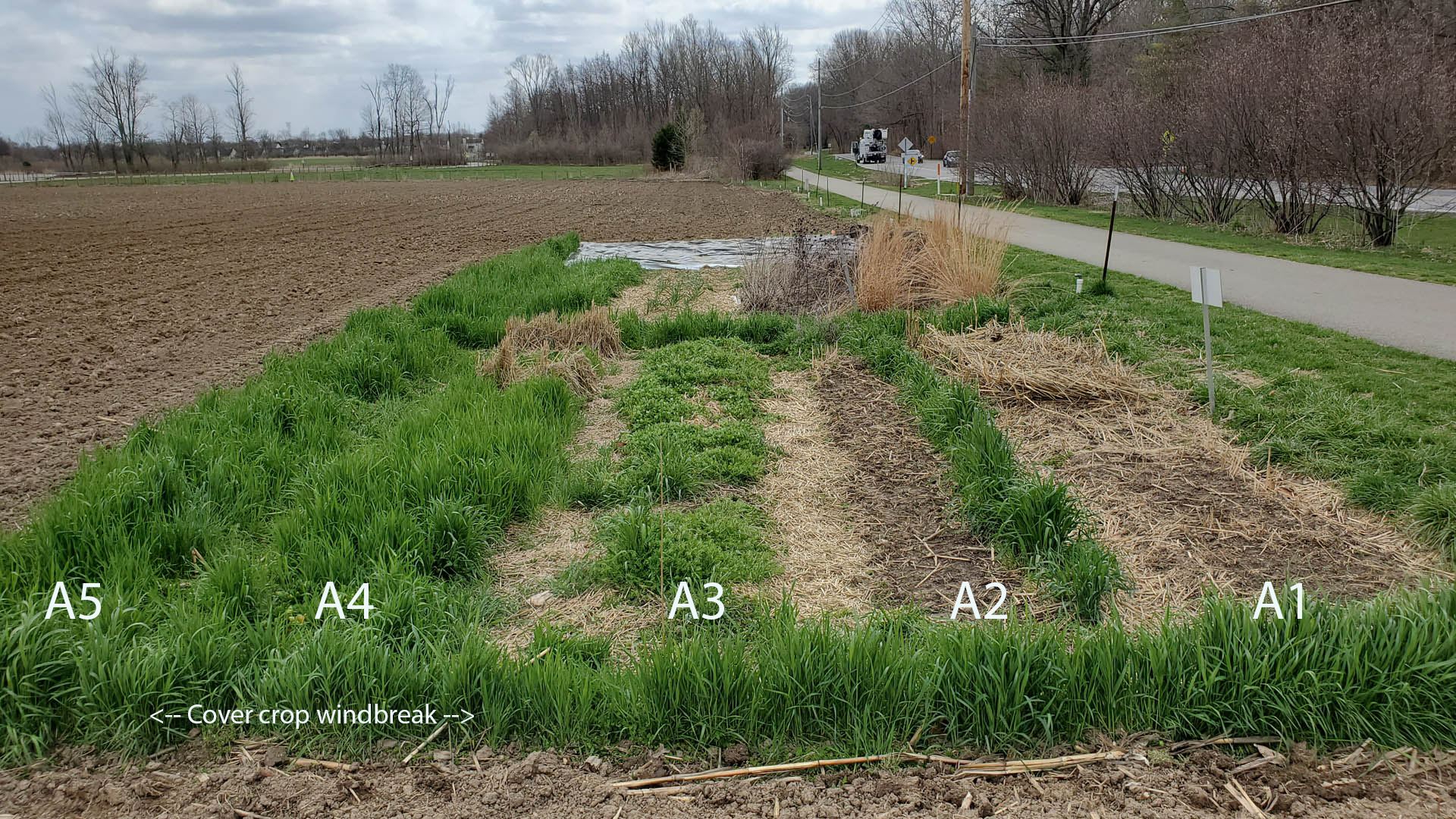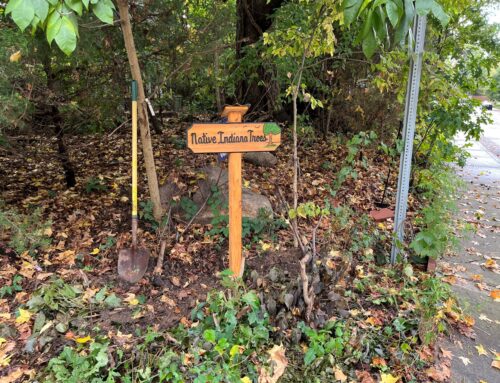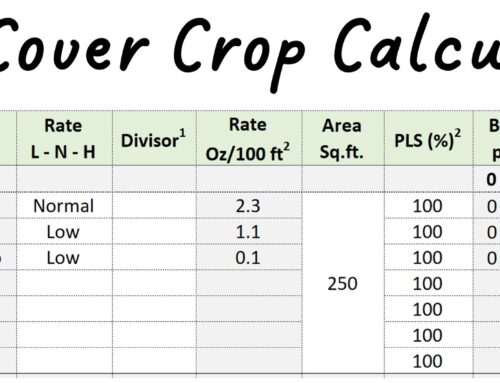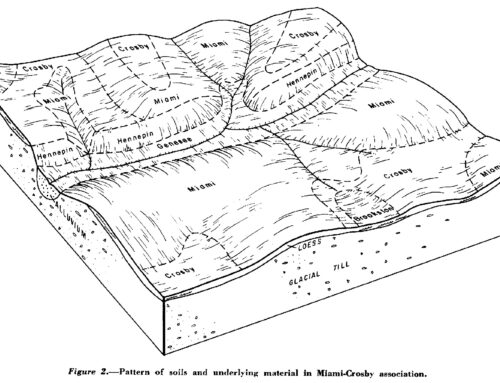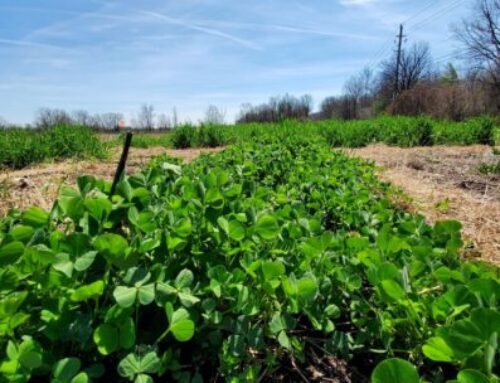by Kevin Allison, Soil Health Specialist
Spring 2021
The SWCD Eagle Creek Demonstration Garden is an educational space for no-till gardening and soil health practices such as crop rotation, cover crops, mulching, compost, and nutrient management. The garden is organized into 30″ wide by 25′ long growing beds, with narrow walkways in between each bed. This blog will illustrate the recent history of three of these beds and show how different cover cropping strategies were used to prepare them for vegetable plantings.
An important factor to consider when determining which cover crop to plant is its compatibility with the following crop. When planning and planting fall cover crops, think about what the cover crop is going to look like the following spring and how to manage or terminate it before planting vegetables.
The picture above was taken in early April 2021. All of these cover crops were planted the previous year but look much different in spring due to having different species in the mixes.
Bed A1 was planted to a “winterkilled” cover crop mix that dies in the winter and leaves a mulch that is easy to manage for an early spring crop like lettuce or peas. Some good fall planted winterkilled options include oats, field peas, and daikon radishes. Summer options include species like sorghum sudangrass and sunn hemp.
Bed A3 was planted to a legume cover crop mix of hairy vetch and crimson clover. These legumes survived the winter and produce nitrogen for the following crop. The mix was chopped and dropped in early April. Because the legumes were not quite flowering yet and therefore susceptible to regrowth, a layer of newspaper and straw was added to ensure termination and weed suppression. The bed was then transplanted to kale and broccoli.
Bed A4 was planted to a high biomass mix of cereal rye, annual ryegrass, crimson clover, and hairy vetch. These all survived the winter and were pressed to the ground by foot in mid April and tarped to ensure termination. The tarp was removed 3 to 4 weeks later and the bed was transplanted to tomatoes and peppers. The same tactic is used before direct seedings of bush beans and squash.
See the following tables for a cover crop seeding window calendar and for information about the survival expectancy of cover crops in an Indiana winter.
USDA-NRCS Indiana’s Cover Crop Seeding Window (PDF)
Marion County SWCD Cover Crop Seeding Table (PDF)
Management Notes
A1
2020: Sorghum Sudangrass / Sunn Hemp (Planted 7/9)
2021: Lettuce / Arugula (Planted 3/21)
Notes on cover crop:
Sorghum sudangrass / sunn hemp
– Good grass/legume cover crop mix, planted after onion and garlic harvest
– Winterkilled, as expected
– The heavy mulch from this cover crop protected the bed all winter
Direct seeding the lettuce in Spring
– Raked the cover crop residue off the bed
– Broadcasted amendments
– Planted lettuce in furrows with good germination
– Once lettuce had decent growth, to better cover soil and protect from frosts, added a light layer of straw
– Experimented with direct seeding head lettuce into heavy mulch with little success. In general, larger seeds are better suited for planting into thicker residue. Best management practice may be to rake off mulch before direct seeding a small seeded crop
Transplanting lettuce
– If transplanting lettuce or spring greens, leave the mulch on the bed and transplant into it
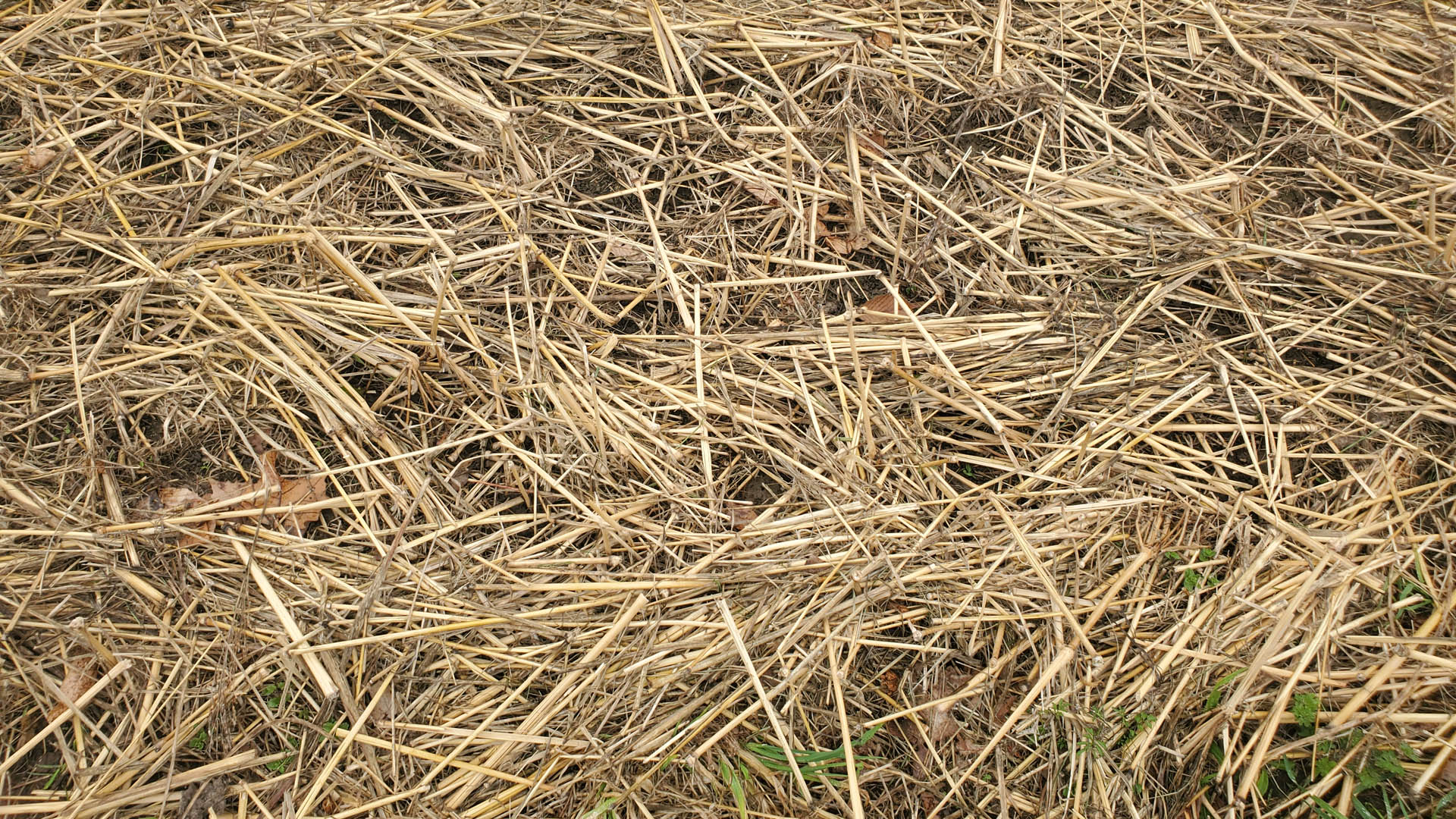 Winterkilled cover crop residue, 3/21
Winterkilled cover crop residue, 3/21
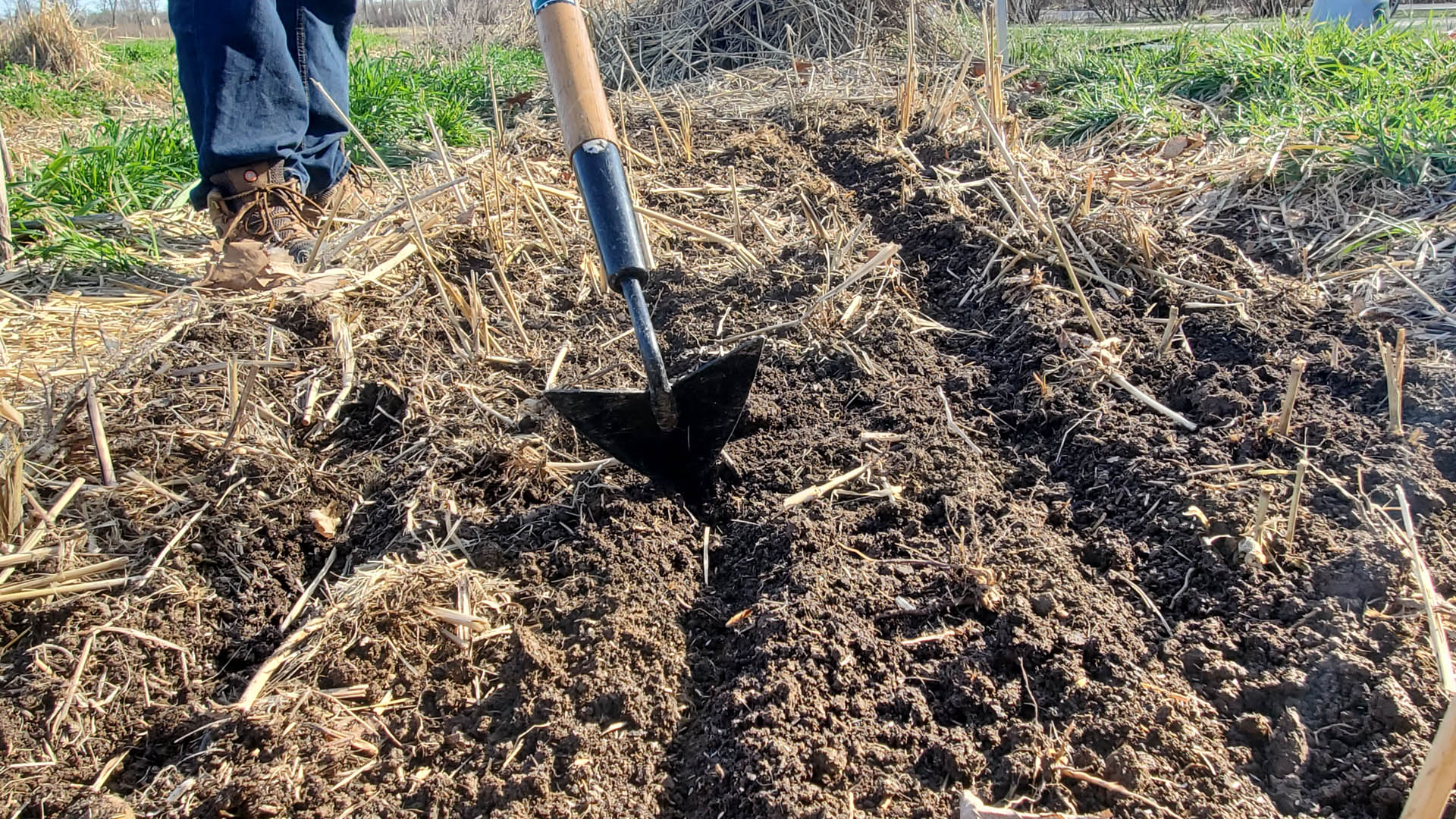 Raked off cover crop residue and created planting furrows with a pointed hoe, 3/21
Raked off cover crop residue and created planting furrows with a pointed hoe, 3/21
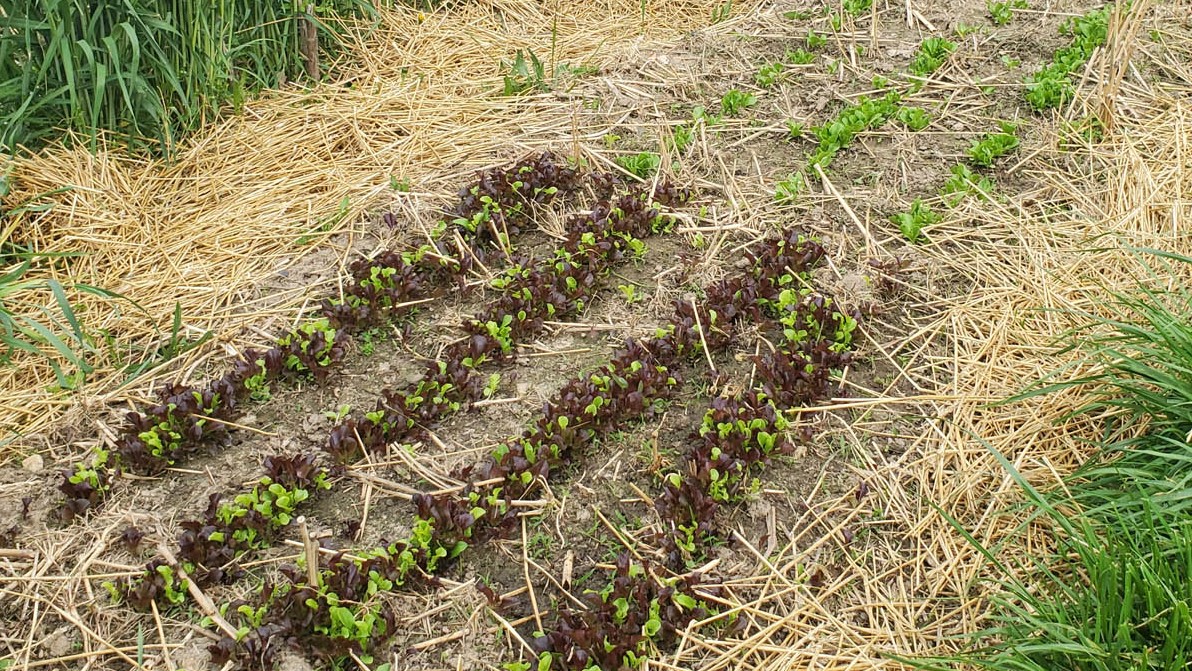 Direct-seeded lettuce growth, photo taken 4/18
Direct-seeded lettuce growth, photo taken 4/18
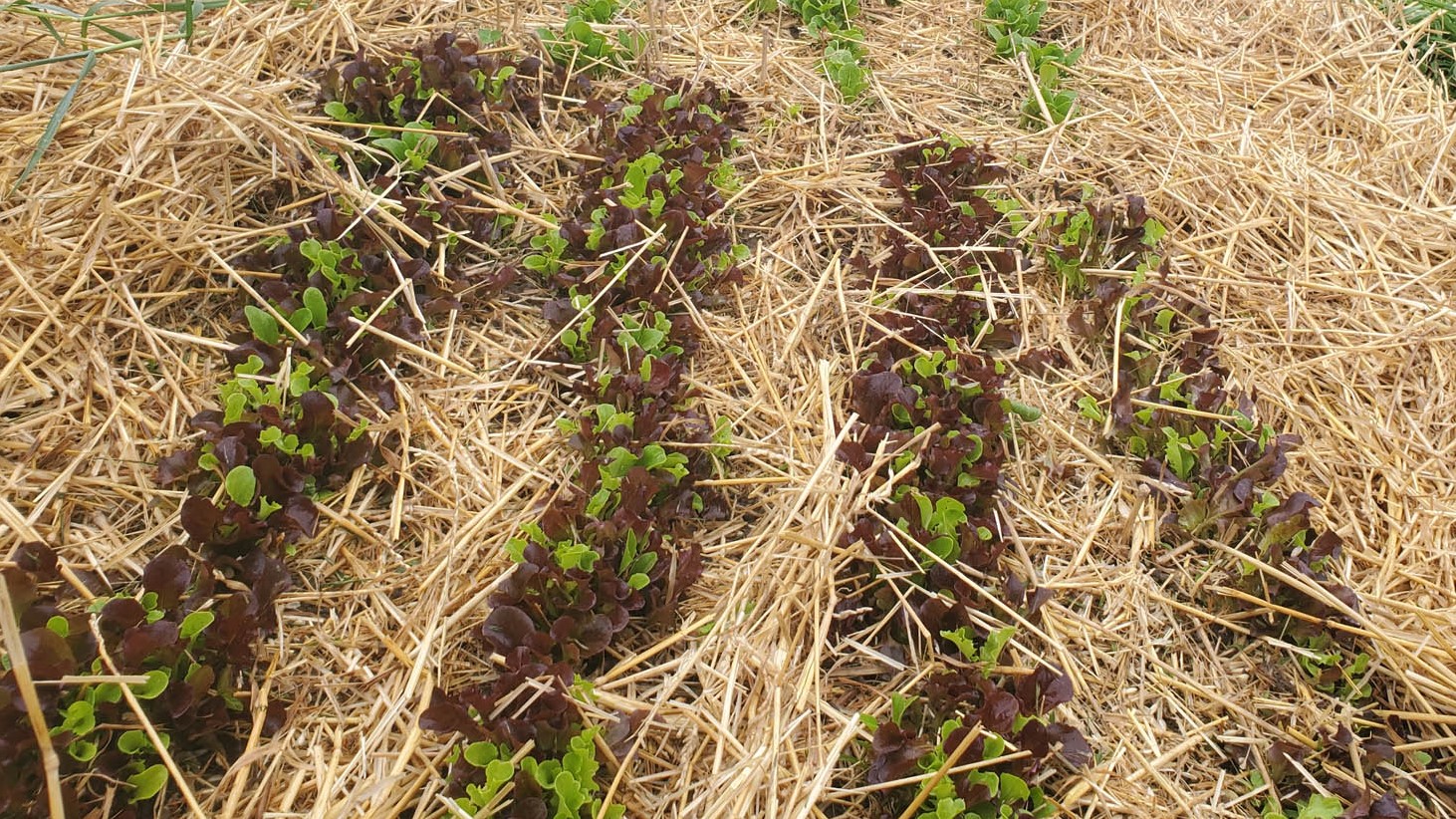 Straw mulch added to lettuce bed, 4/25
Straw mulch added to lettuce bed, 4/25
A3
2020: Oats / Crimson Clover / Hairy Vetch (Planted 9/4)
2021: Kale and Broccoli (Cover crop chopped and drop on 4/6, covered with 1 layer of newspaper and straw mulch, Crops planted on 4/16)
Notes:
Interseeding Cover Crops under Tomatoes
– Seed was broadcasted into light mulch on 9/4 under producing tomato plants
– Good growth of the hairy vetch and crimson clover legumes
– Poorer cover crop growth in areas directly near tomato plant main stem
– Reseeded and added straw mulch to any bare soil after tomato plants were removed.
Hairy Vetch and Crimson Clover
– These legumes overwintered, as expected
– Legumes provide nitrogen for upcoming brassica crop, a heavy feeder
– Legumes then chopped and dropped on bed in early April
– Added 1 layer of newspaper and straw on top of cover crop residue
– Made spaces in the mulch in 2 rows every 18″
– Transplanted Kale and Broccoli
– If chopping and dropping, legumes are more easily killed when they are flowering. This mix was not yet flowering when cut, but potential regrowth was suppressed by the paper and straw.
– If regrowth or weeds are a concern, leave the bed completely mulched for a period of time to block sunlight and terminate vegetation before making transplant holes.
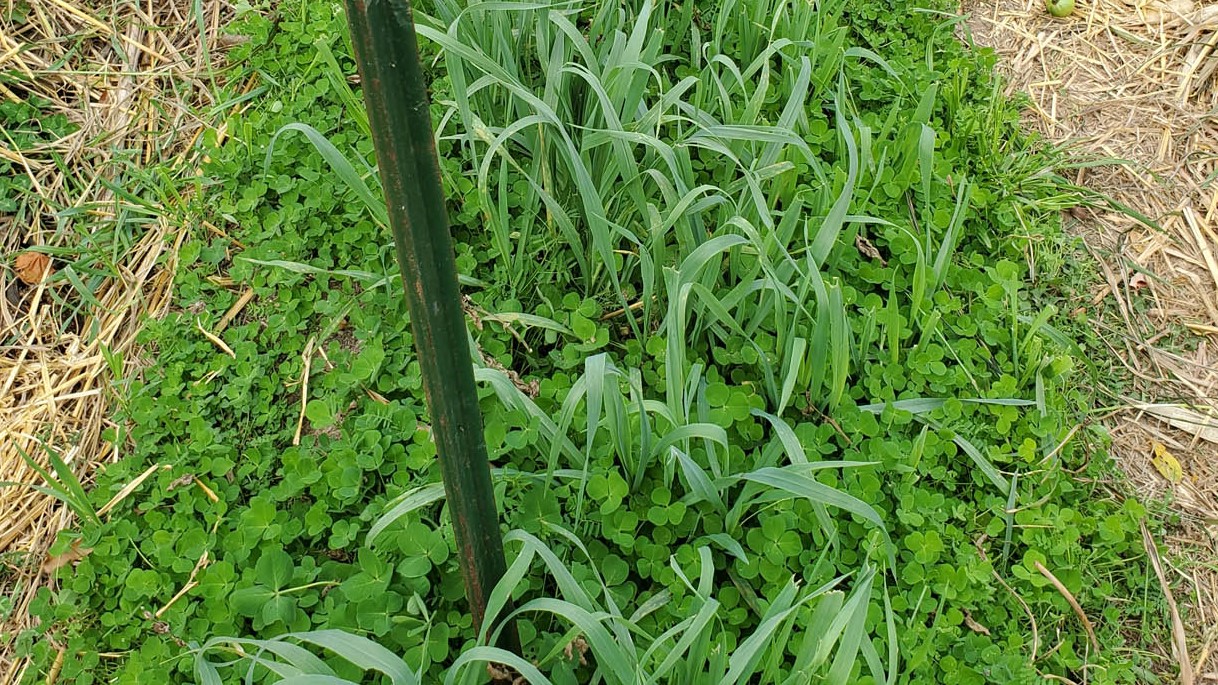 Interseeded oats, crimson clover, and hairy vetch under mature tomatoes on 9/4, photo taken after harvest on 10/16
Interseeded oats, crimson clover, and hairy vetch under mature tomatoes on 9/4, photo taken after harvest on 10/16
 Chopped and dropped hairy vetch and crimson clover then covered with layer of newspaper and straw, 4/6
Chopped and dropped hairy vetch and crimson clover then covered with layer of newspaper and straw, 4/6
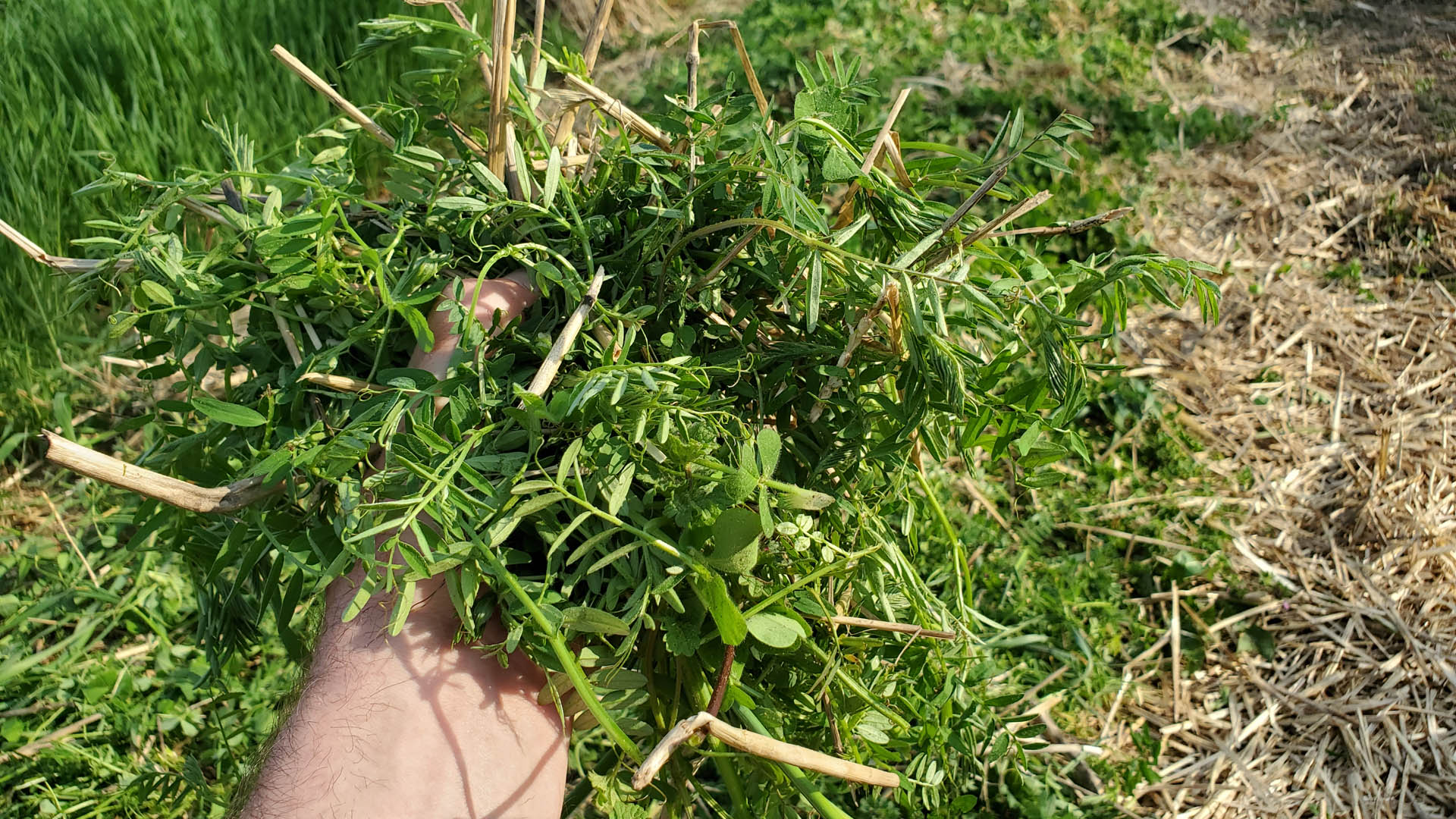

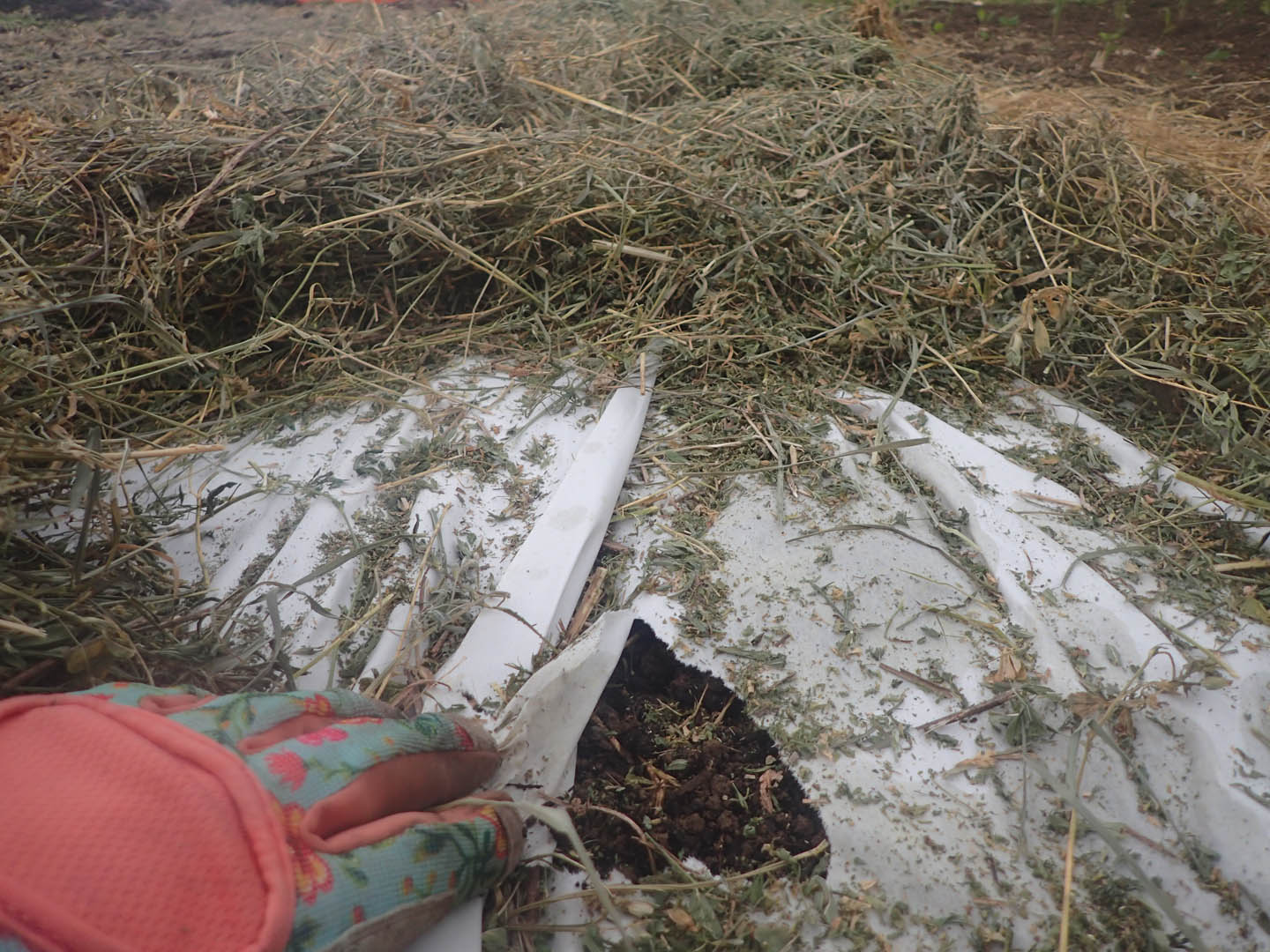
Tactic being used last season sheet mulching with newsprint rolls and hay
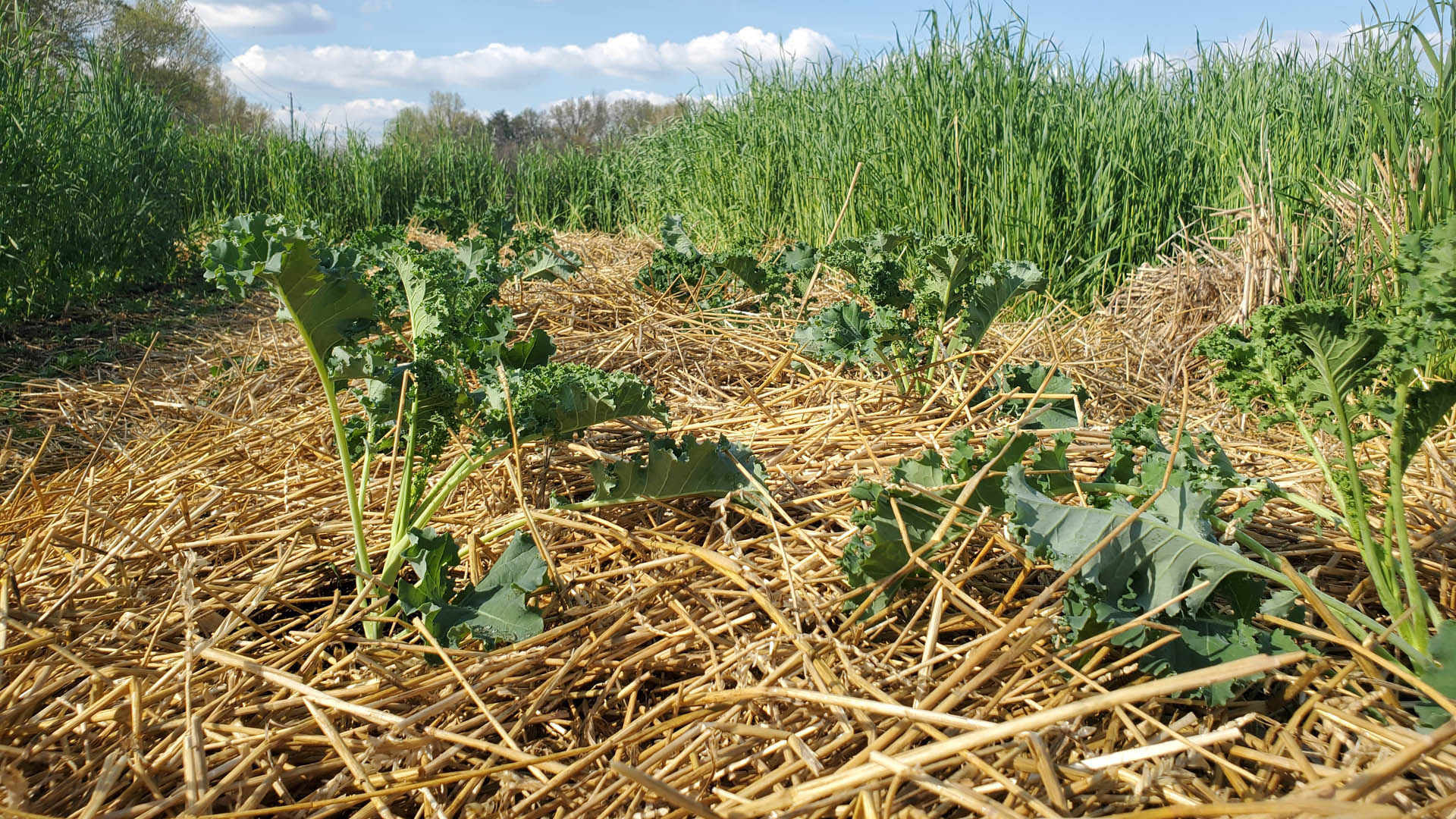
Kale transplanted into soil and protected by mulch on 4/16
A4
2020: Cereal Rye / Annual Ryegrass / Crimson Clover / Hairy Vetch (Planted 10/5)
2021: Tomatoes (Cover crop crimped by foot and tarped on 4/16. Tarp removed on 5/13. Tomatoes planted on 5/15)
Notes:
– Cereal rye can be planted later in season than most cover crops
– The mix overwintered, as expected
– Some fall growth, great spring growth
– Though additional options exist, a cover crop mix with cereal rye is most easily terminated with by temporarily tarping.
– Mixes are crimped or cut and then temporarily tarped to block light and terminate vegetation, with a rule of thumb being for 3 to 4 weeks
– Since tarps are effective at killing cover crops, a more diverse mix can be used / For example, crimping or breaking the stems alone does not effectively terminate annual ryegrass whereas a tarp will
– Tarp soil when it has good moisture, for 3 to 4 weeks
– Remove tarp, let the bed air out for a short period, and then transplant tomatoes into mulch
– To ensure long lasting weed suppression, after removing tarp, mulch up with materials like newspaper and straw.
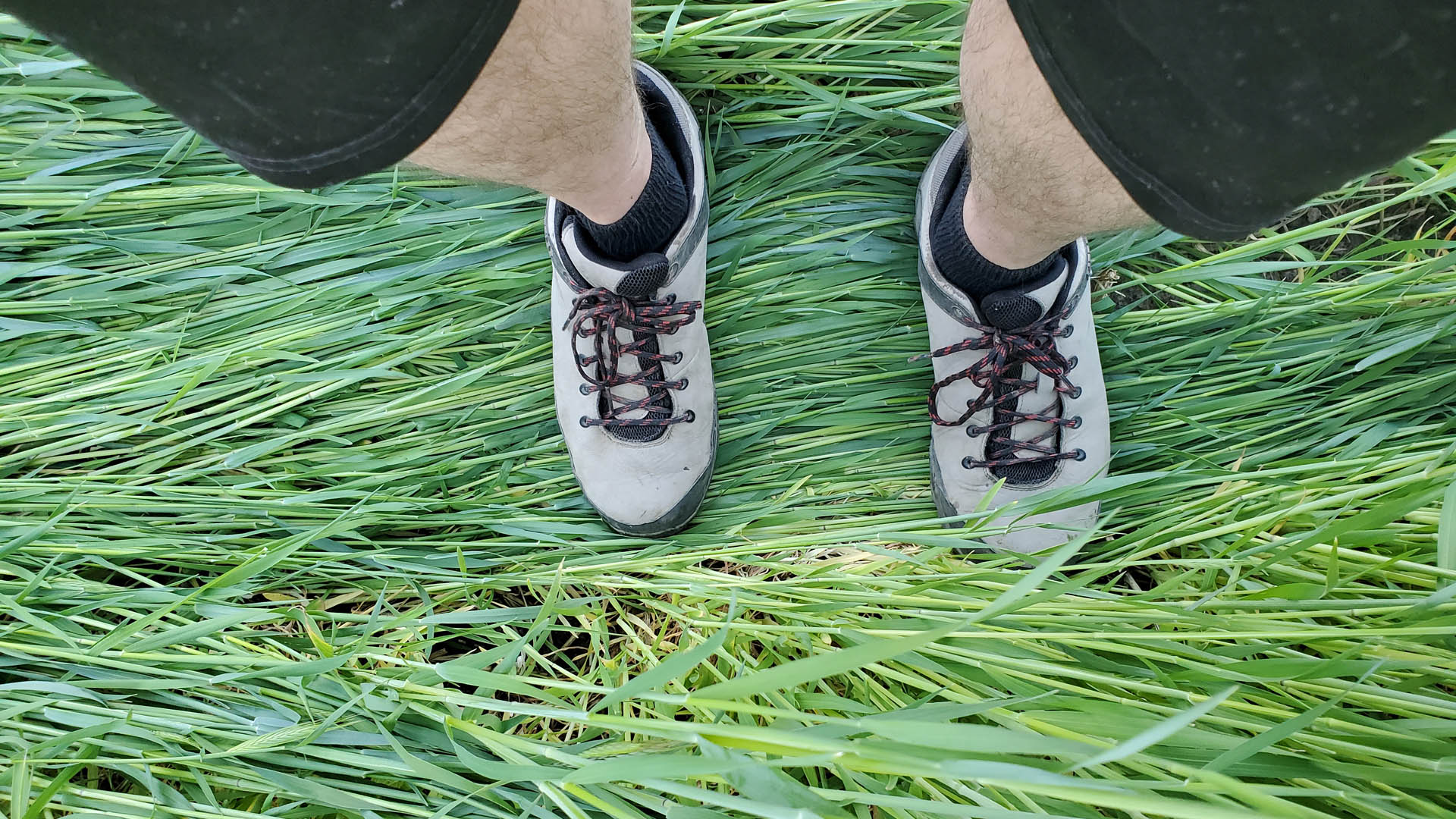
Flattening cover crop to soil surface, 4/16
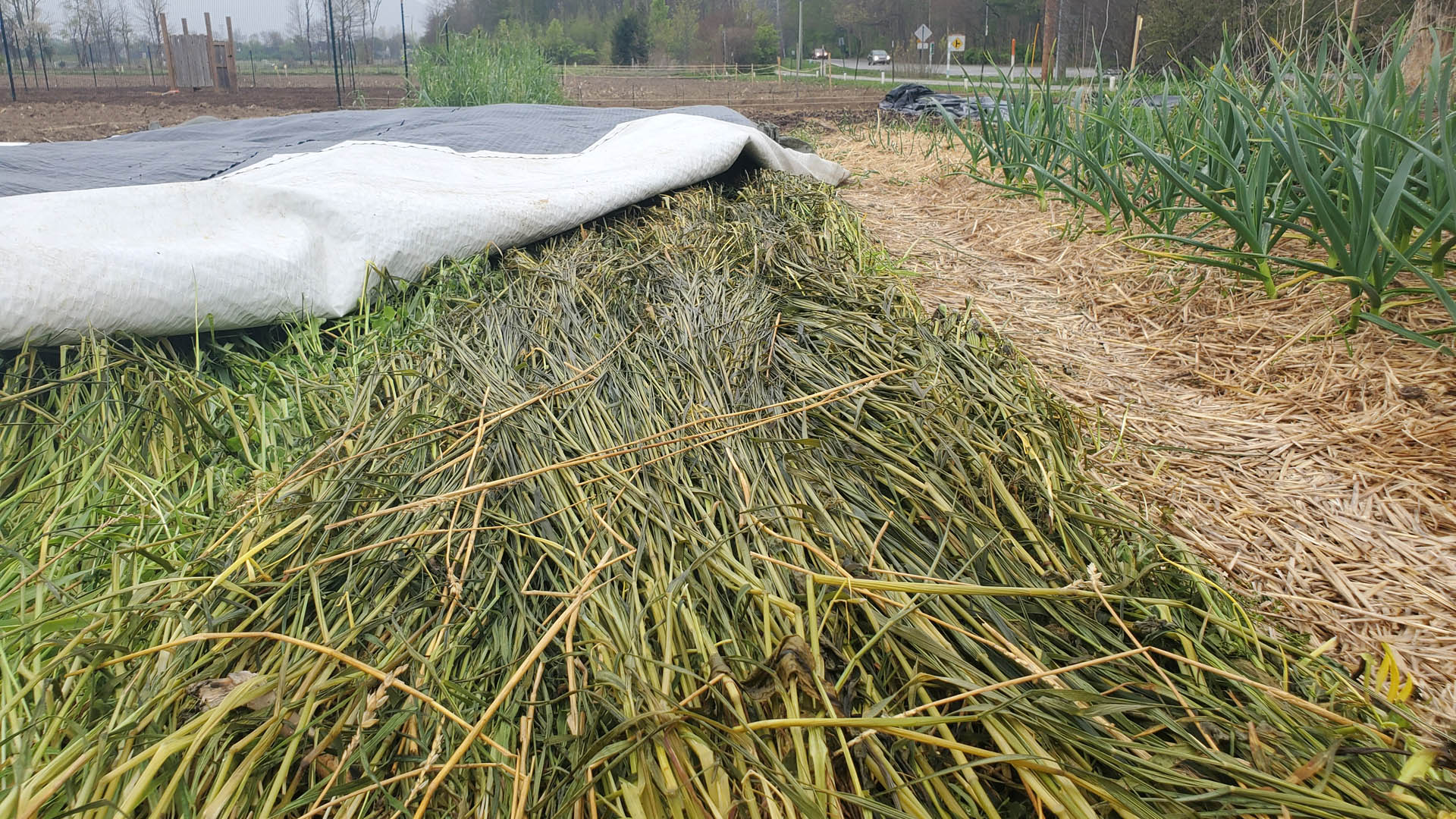
Cereal rye crimped and tarped on 4/16/2021, photo taken 4/24
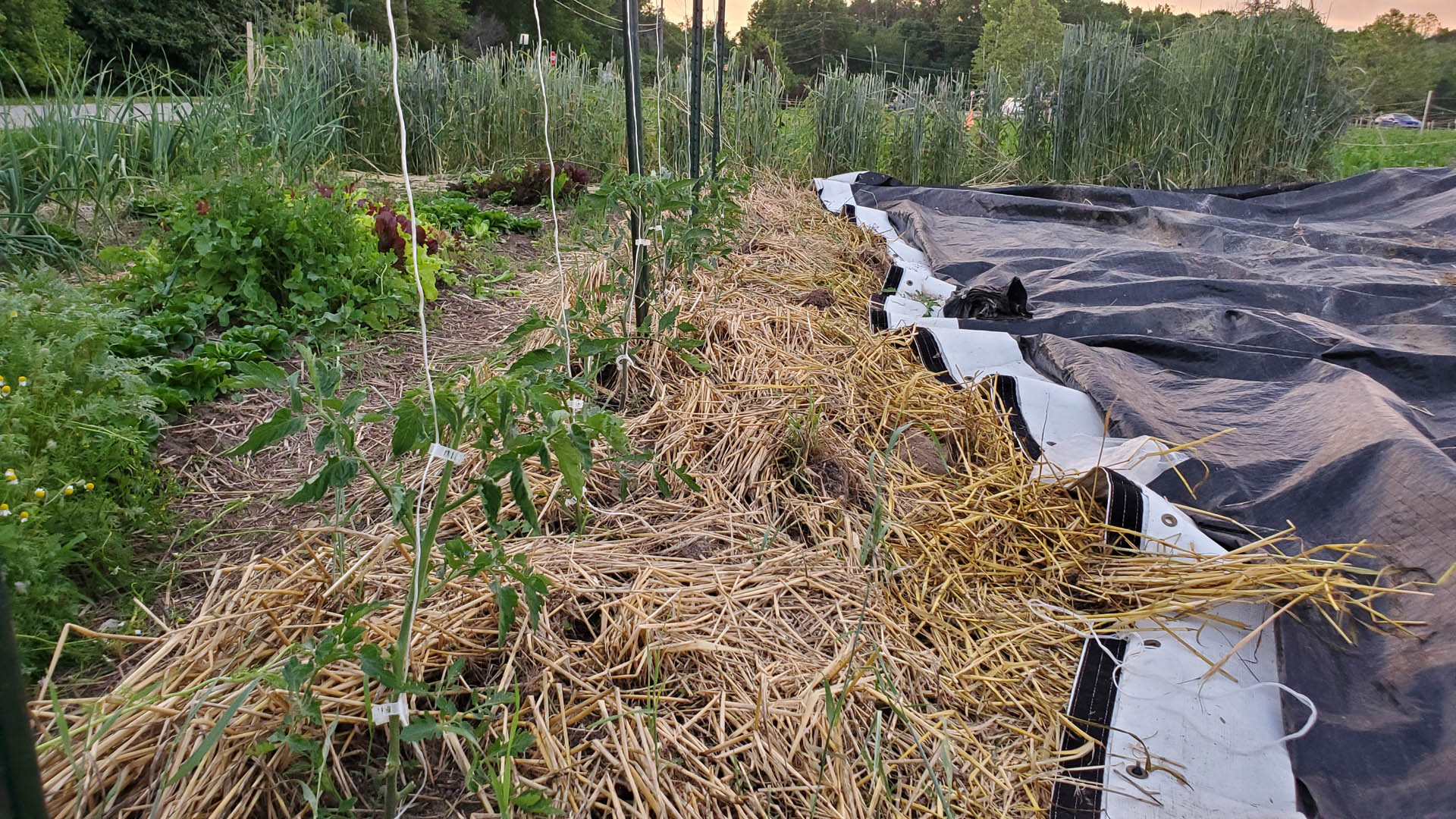
Transplanted tomatoes, taken 6/5
The SWCD Eagle Creek Demonstration Garden is located on the Eagle Creek Trail at West 56th Street and Reed Road. Contact the SWCD to set up a tour or for technical assistance.

